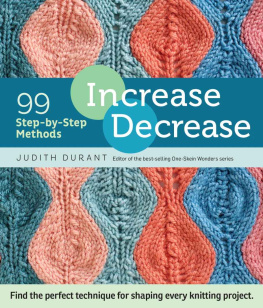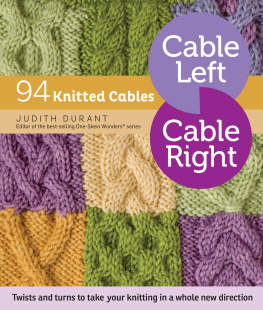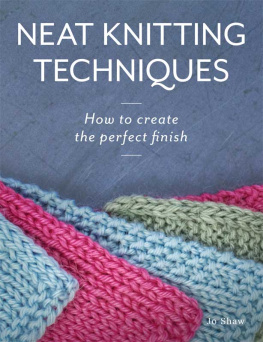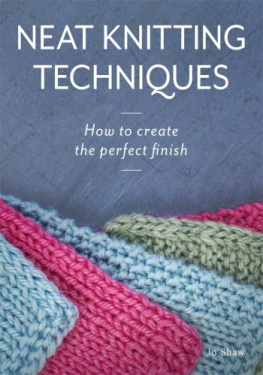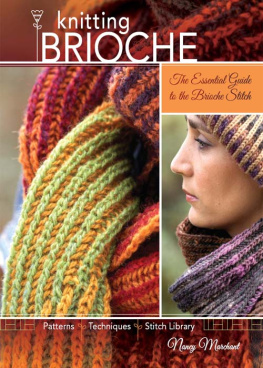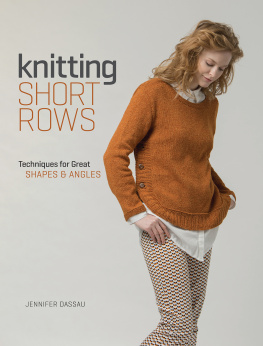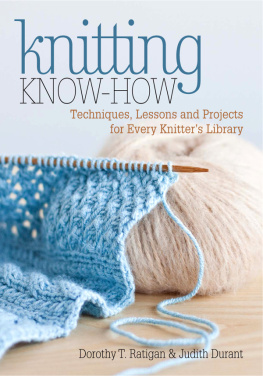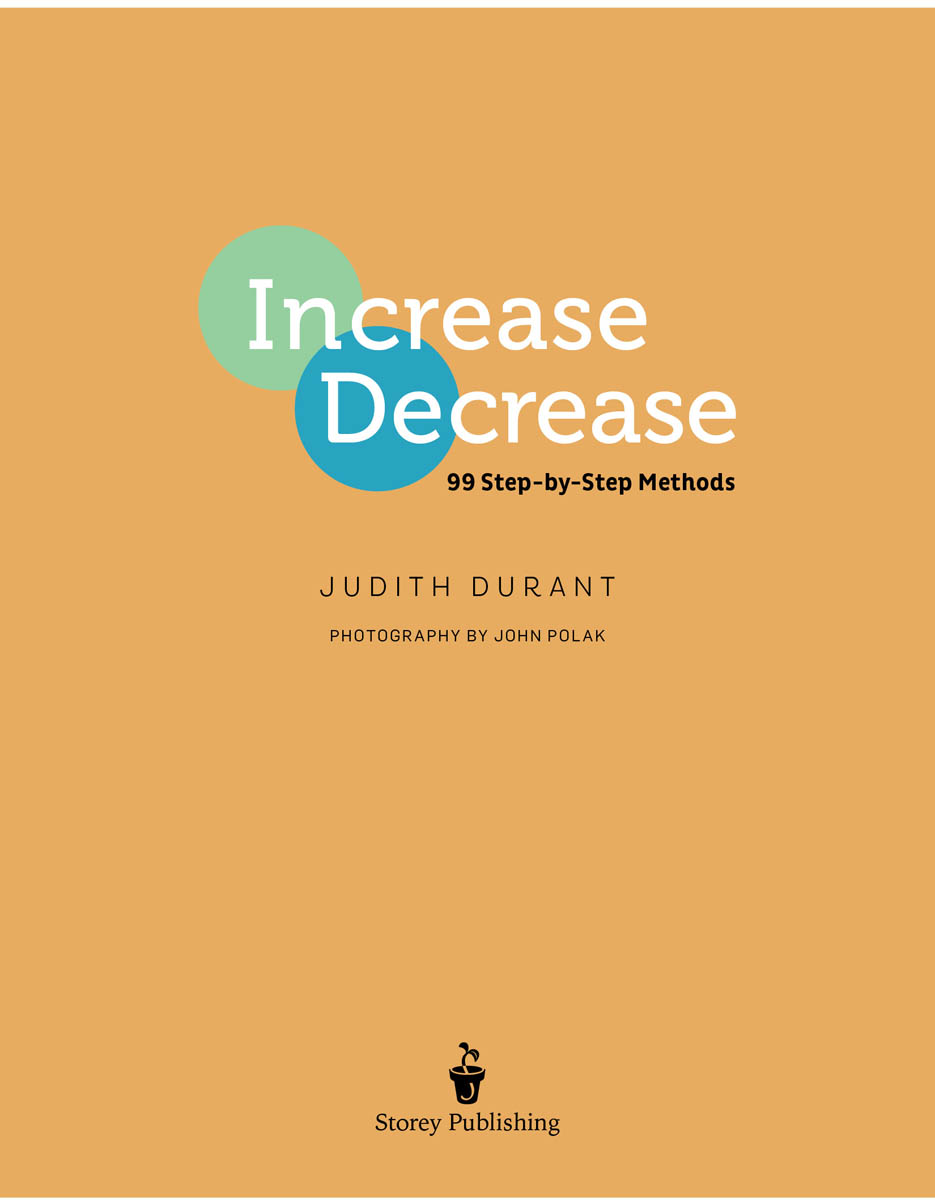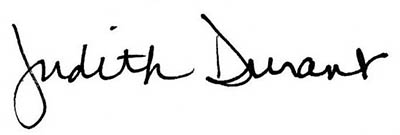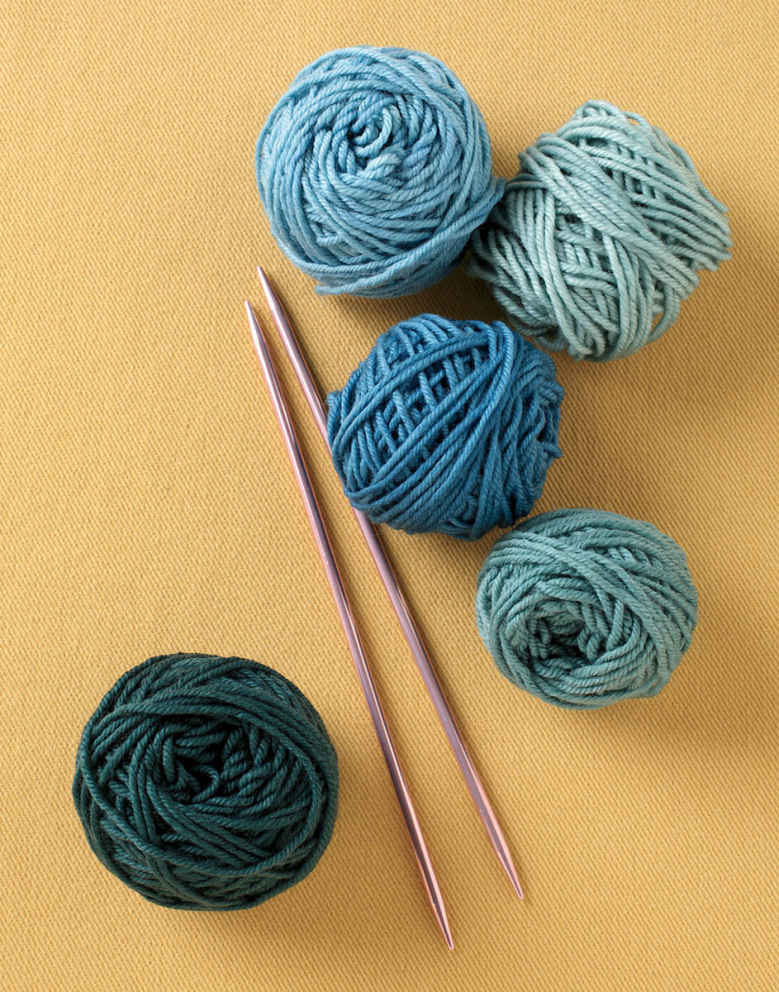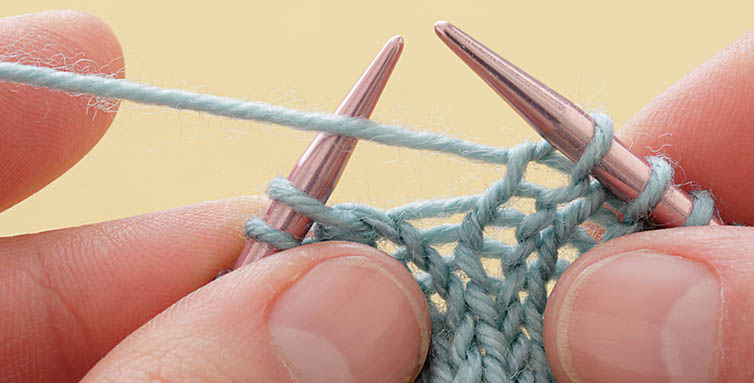For Mom.
Thank you for teaching me to knit
all those many years ago. Who knew
it would lead to here?
Contents
Introduction
My mother taught me to knit when I was eight years old. I took to it immediately, and I like to say that my first project was a dishcloth and my second was a blue cabled sweater to go with the kilt Id just sewn for myself.
There may have been a step or two between, but you get the picture. While I enjoyed working all kinds of decorative patterns, it wasnt until the 1990s, when I worked for Interweave Press, that I began to understand the more intricate technical aspects of knitting. During 30 years of knitting, when I needed to increase a stitch, I knit (or purled) into the front and back of the same stitch, no matter what I was working. And when I needed to decrease a stitch, I knit (or purled) two stitches together. In retrospect I find this somewhat alarming in view of all the very meticulous sewing I did for myself and my career as a theatrical costume designer.
I can remember like it was yesterday that during the interview process for my job as book editor at Interweave, Linda Ligon, founder and president, asked me to write reviews of several Interweave knitting books. One I criticized for the lack of an easy-to-find glossary of techniques used. Ive been knitting for many years and I can follow most patterns, but what is an ssk? Ive searched for a definition in the book and can find none. The criticism was valid; a good knitting book must define the terms it uses so that it is accessible to beginners and experienced knitters alike. But in retrospect, Im mortified that I really did not know what was meant by ssk.
And that is where the fun started. When I saw that knitting two stitches together created a decrease that leans to the right and that slipping two stitches and knitting them together through the back loop created a decrease that leans to the left, I understood just how haphazard my knitting had been to that point. And it wasnt too long before I could tell you why those two slipped stitches in an ssk decrease should be slipped knitwise rather than purlwise if you want the decrease to mirror exactly a k2tog (knit two together). Eventually k2tog and ssk were joined by seven other pairs and a variety of double decreases. The same thing happened with increase methods, and my shaping repertoire continued to grow.
Many patterns are written with nonspecific instructions for increasing and decreasing. For example, when widening a sleeve that is worked from the wrist to the shoulder, the instructions may say, Continuing in pattern, increase at the beginning and end of every other row 12 times, then every fourth row 4 times. These increases are usually worked on the right, or public, side of the work, and the informed knitter will choose two increases that are mirror images, that is, one increase will lean to the right and the other will lean to the left. But what if you have to increase on every third row, meaning that some increases are worked on the right side, while others are worked on the wrong, or private, side of the work? Several pairs of increases that are worked knitwise (on the right side) also have purlwise versions (worked on the wrong side) that will look the same as the knitwise increases when viewed from the right side. Amazing.
I also learned that theres not a pat method for every circumstance, so sometimes we need to be creative when sizing up how to reduce or increase stitches, especially when working with textured or multicolored patterns. Ive included a section called Combinations and Special Circumstances that explores how to customize shaping for specific patterns (see ).
This book presents what Ive learned about increasing and decreasing over the past 20 years. Try swatching the various methods so you understand fully how they work. Keep this book handy so you can refer to it and choose the perfect method for any situation. I hope you have as much fun discovering the ins and outs of increasing and decreasing as I did.
Knit on,
Part One
Increase
Options abound when it comes to increasing to widen your knitted fabric. You may want your increasing stitches to make a decorative statement, or you may opt for a more subtle, nearly invisible approach. Here are 36 different ways to add stitches to a row of knitting. Some increases are open, forming a decorative hole in the work. Many increases are closed, making them somewhat invisible; some of these lean to the right, some lean to the left, and others are neutral. There are single increases, which add one stitch to the work; double increases, which add two stitches; and multiple increases, which add three or more stitches to the work. Some increases are worked into an existing stitch; some are worked into the yarn between two stitches; and some stand alone, meaning they are formed with the working yarn. Ready?
Chapter 1
Neutral Increases
Neutral increases are those that do not lean to the left or the right, but are neutral, or vertical, in appearance. These can be used when you dont need paired or mirror-image increases, such as when you want to increase a number of stitches evenly across a row.
Open Neutral Increases
These increases will form a decorative hole in the work. They can be used anywhere you need to add a stitch, as long as the open hole creates the desired effect.
Closed Neutral Increases
These increases form an unobtrusive new stitch between two existing stitches. Leaning neither right nor left, they can be used anywhere you need to increase a stitch.
Open Neutral Increases
Open Yarnover Increases
Known in knitting language as a yo, the stand-alone yarnover increase is formed by wrapping the yarn over the right needle between two stitches. A yarnover is most commonly used in lace or other openwork knitting as part of a decorative pattern, but it can also be used to increase stitches. For example, you can place a yarnover after the first and before the last stitch on every other row to form a triangle, as for a shawl. When used for increasing, the yarnover is most commonly used before a knit stitch. When used in lace, the yarnover can be used before a knit or a purl stitch.
Characteristics
- Forms decorative hole.
- Formed with working yarn between stitches.
Uses
- Decorative increasing.
- Eyelets and lace patterns.
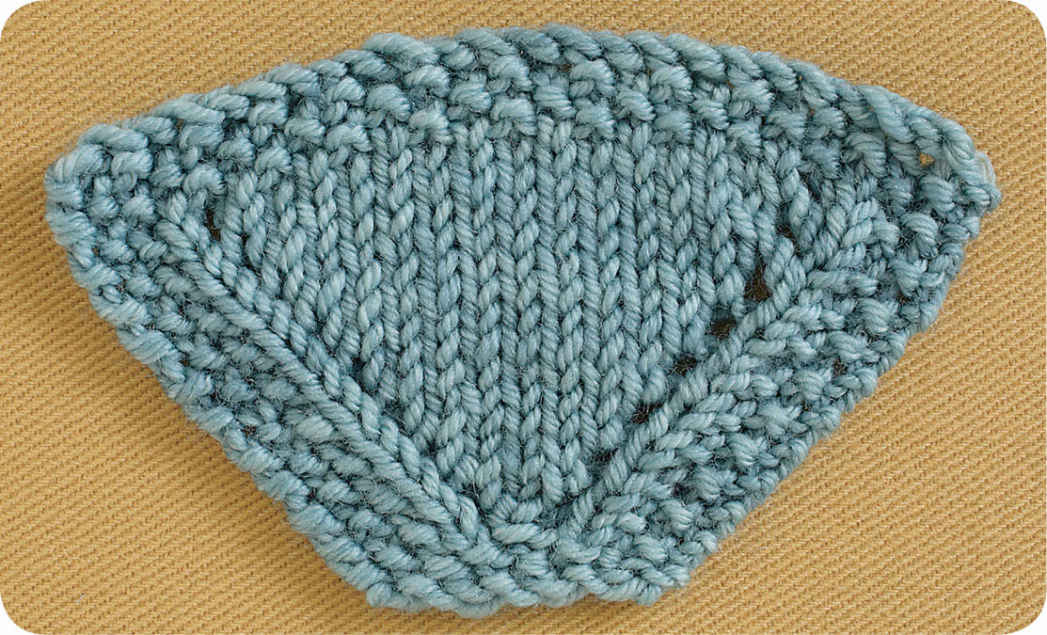
Worked in stockinette stitch, yarnover increases will look the same whether they are worked on the knit or the purl rows.
Open Yarnover (yo) before a Knit Stitch
- Bring the yarn to the front between the needles.

